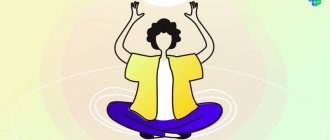Have you ever asked someone how they were doing and they responded, “I'm having Groundhog Day”? Or have you ever reacted this way yourself?
This common response signals that you are not getting what you want from life . You are on autopilot and you don’t have a clear idea in which direction to develop.
In the whirlpool of things to do, you could simply forget what you really want, what you are moving towards. Dedicate more time to your family or get a promotion.
You can get carried away by the process and not notice the ups and downs, or passively go with the flow, and even despair of getting what you want from life.
Setting goals in major areas of life is a powerful process for creating an ideal future , and the motivation to turn this idea into reality.
Having a clear idea of what you want to achieve will give you better guidance when deciding where to focus your efforts.
Directing your own internal resources towards results will allow you to do what you love professionally. You will not be distracted by unimportant factors, improving your skills. Thus, the result will be effective.
In what areas of life should you set goals first?
In many theories, the goal is represented as a target at which an arrow is aimed. Is this display correct? The goal is to visualize the result of your actions. The important thing is whether its staging and achievement can change life for the better.
Vital Goals
According to the formulation, the goal is to predict the result of an activity, which comes from the concept of significance, importance and desirability. When a person wants something, he is willing to work to achieve or realize it. And if you don’t lose sight of what you have planned, progress will be faster than if you wander aimlessly.
If you wish, you can take an online master class: “The Wheel of Balance for Advanced.” The author of the course promises a pleasant shock at how your life will change.
Human development goals
According to other theories, there may be more than four such areas in relation to which one can set goals in life. The following areas are also identified for setting tasks and sequentially completing them.
- Work, career advancement and business.
- Training and education.
- Social activities, relationships with friends
- Hobbies, recreation and sports.
- Creating a family.
- Personal life.
Theories of personal development argue that true success is only achievement in several areas at once. Advancement in only one direction usually leads to the fact that it will very soon lead to failure.
If a person is successful in three areas: work, family and friends, and trouble begins in one of them, the other two support him. Difficulties that arise (for example) in the service do not last forever and pass with a change in the situation. Then you can catch up and fix everything. For example, enable effective work time planning. But if there were no successes in family and relationships with friends, undue stress could also arise in these areas.
- Hope for a successful correction of the situation would be lost, as would self-confidence.
- There is no margin of safety or psychological protection under such circumstances.
- Crisis and stress destroy life.
Another interesting question is: is it possible to succeed in all six areas (goal achievement system)? It doesn't come right away. First you need to learn how to manage time while combining interests. Moreover, no one direction should infringe on the other five. The key to the problem is the conclusion: you need to try to have goals in all six areas.
Main directions of self-knowledge
- Studying yourself, your own motives, fears and blocks. Rationalization of the unconscious, identification of one’s main creative interests.
- Development of skills for interaction with the external environment (communication).
- Working with your own psyche. Conducting effective dialogues with yourself aimed at internal changes.
- Search activity and activity in real life.
- Maintaining an effective lifestyle (physical, mental and energetic health).
- Systematic acquisition of specialized skills and knowledge in various fields in accordance with specific goals.
- Formation of short-term and long-term goals. Strategic approach to life.
Strategic directions of self-development can be divided into 4 basic vectors:
- Creating comfortable conditions for yourself.
- Establishing a satisfactory system of interpersonal relationships.
- Creative self-realization.
- Self-improvement in all significant areas. Development of a motivation system.
For those who intend to use certain self-improvement practices or engage in targeted training, the questions to ask themselves are: “Where can I apply this in real life? What specific positive changes do I expect? How does this application correspond to the chosen strategy?
If there is no clear answer and the wording is abstract, you should not waste time on these activities, since the application of the changes is unlikely. Development is possible only as long as it is interesting. Therefore, in order to determine strategic directions for self-development for yourself personally, it is necessary to formulate true goals.
At the initial stage of development, the strategic task for any individual is to reach the basic efficiency of life. A person needs to break away “from the herd” and move into self-determination, begin to feel natural aspirations and be aware of them. In other words, he must understand what he really wants.
For effective personal development, it is necessary not only to set goals for self-improvement, but also to have a clear plan. Often people claim that they are engaged in self-development, have a dream, take various actions, but at the same time have no idea about the correctness of the chosen path.
In this case, harmonious growth and maturation does not occur. The process is more reminiscent of chaos, exhausting a person and giving rise to apathy. To prevent this from happening, you should know the vital areas and areas of self-development and focus on them.
List of goals
Having become familiar with the directions, let’s consider what the tasks themselves might be. There is SMART technology, the name of which is translated from English as “smart”. That is, intentions should not be vague, they must be clearly formulated. If you form them using the SMART method, and also coordinate with each other, they will compare favorably with ordinary “vague” desires.
The list of intentions created regarding the areas of life and activity identified as paramount and necessary will turn into an intellectual program. Such an action plan (achieving goals, a step-by-step system) will help correlate the assigned tasks with reality. And also consider the degree of their ambition.
One example is the common desire to lose weight. To turn it into a SMART goal, you need to give yourself an account of the existing initial circumstances. If a man, at his height, has an excessive body weight of 100 kg, he should know what weight he needs to reach. Next, the time it takes to lose weight to 85 kg (the required value) is calculated. Taking into account individual capabilities, self-control and holidays with feasts, the man expects that he needs 4 months.
The goal became measurable and oriented, as did its new formulation. Namely: “My weight by such and such a date should be 85 kg or less.” Having finished forming a goal regarding physiology, we move on to well-being. For example, the goal “I need to improve housing for my family” is not well defined. To register it using SMART technology, we indicate what we currently have and what kind of housing we want to get. We also evaluate our financial capabilities.
In this way, you can correlate all your claims with the reality of the present and future, putting them into a single list in the most important areas of existence.
Some clarifications
Selection of spheres. The suggested number and composition of spheres are suitable for most people. However, someone can choose their own areas if their life priorities differ from those proposed.
Sector sizes. In the figure, the sizes of the sectors are the same. But in reality, each person has his own “sizes”. For example, the career sector may matter more than the environment sector. In this case, you can draw them in different sizes so that when looking at the drawing the priorities are clear.
Don't downplay the unpleasant. A common mistake is not being honest with yourself and downplaying unpleasant moments. However, it is worth being realistic in your assessments and this is what will help you set the right goals and correct shortcomings.
Incorrect estimates. This is the opposite of the previous point. For example, if you have non-dangerous stomach problems, say gastritis, but otherwise your health is more or less normal, then you should not give yourself a low rating in this sector. That is, take into account a small number of factors. Your arms, legs, head and much more remain healthy and this needs to be taken into account.
Periodic review. It is advisable to review the wheel periodically so you can see your progress. Additionally, your priorities and values may change over time.
Distribution of goals by area of life
How to develop the main directions? It is necessary to determine the stages required for the development of a particular area of being. Specific achievement of goals - a step-by-step system. Next, we will briefly describe the process in important life areas.
Physical development
Without proper treatment of your body, personal self-development is impossible. Ensuring normal physiology is discussed in this section and includes the following mandatory areas.
- Mode.
- Nutrition.
- Physical activity.
- Maintaining hygiene and cleanliness, including in relation to the environment.
- Harmonious relationships.
- Elimination of factors and habits harmful to life.
Social development
This area is responsible for proper relationships between people. You especially need to make an effort to be able to communicate with all categories: elders, peers and juniors. The duty of everyone is the following.
- Respect for elders in age or position.
- Peers are more suitable for friendship.
- We need to take care of the younger ones by supporting them.
But there are a number of actions that should definitely be excluded.
- Envy of elders.
- Quarrels with equals.
- Humiliation of juniors.
Intellectual sphere, how to develop it
The development of intelligence occurs in the course of professional activity. The best option is the choice that a person likes and suits him in every way. It is important to find your purpose. Related areas also require development, especially if they are part of the process of achieving results in the main area. Reading smart books, getting acquainted with lectures on development, relationships between people are very useful for the mind. And if you want to succeed in any field, you need to find a person who will serve as an example.
Spiritual development
Religions teach us to perceive ourselves as individuals with an eternal nature. Obtaining information about the soul, the spiritual world and development helps to improve. Several methods can be specified that lead to the correct implementation of such a process.
- Listening to thematic lectures.
- Introduction to religious scriptures.
- Communication with spiritually developed people.
- Appropriate practice.
- Search for a spiritual teacher.
The spiritual sphere, as one of the four main ones, needs constant attention. It especially stands out as giving meaning to efforts in other directions. The effectiveness and benefit of setting and solving problems in all these areas depends on its development.
No. 4. Social-emotional development
What is social-emotional development?
The social-emotional dimension manifests itself in everyday interactions with other people. This leads to the conclusion that social-emotional development does not require special time investment. It can be carried out during a normal conversation with friends, colleagues, relatives, children, etc.
But this also requires effort and special skills. The main feature is that you need to act not with your intellect, but with your emotions.
Ways that can help develop the social-emotional dimension
- The first way is to listen, not with the goal of answering, but with the goal of understanding and feeling yourself in the other person’s place. Listen so that you can express the other person's point of view in your own words.
- The second way is when discussing any decision, try to come to a third alternative. The third alternative is a solution that will satisfy both of you.
- The third way is to live by Win/Win. This means that the success of one does not exclude the success of others. Strive for it.
The size of the goal, the duality of the approach to goal setting and optimization
Goal setting training involves two approaches to the process:
- You need to set big goals and try to accomplish them, fully realizing your capabilities. There are many books on this topic, and scientific research has also been conducted: this approach does not accept the lack of goals in life. It is believed that people who have achieved something have always clearly understood the tasks assigned to them.
- Life should be filled with emotions and impressions. People follow the aspirations of their souls, breaking out of the captivity of activities to achieve goals. This is where the joy of life lies.
These approaches do not exclude, but complement each other. Some of the citizens surveyed as a result of the study note that the result was disappointment. Others reported insomnia associated with thoughts of the intended purpose. Training on goal setting and achieving set goals is aimed at the correct distribution of internal investments. The latter should not be colossal compared to the result. This solves the problem of human persistence in achieving goals.
The situation should be considered in a variety of options and paths leading to the desired. Goal setting and life planning can be represented as states. The size and proportionality of the task is also important. If it is difficult and global, requiring large resources, the process can become prohibitively expensive for a particular person. The solution is micro-solutions - a proven path to achieving big goals.
When formulating your plans in several areas at once, you need to keep in mind realism. Optimal allocation of resources is necessary to achieve the goals. In other situations, by lowering the “bar” of ambition, you can only win. Optimization across multiple areas should result in higher efficiency for each task. This approach accepts setting smaller goals with their comfortable implementation.
Biological activity
Within the framework of biology and the theory of life safety, this concept is understood as a set of biological processes that support human life. In this aspect, metabolism is important as a certain set of chemical reactions that supports the flow of life. Another concept that is associated with biological life is homeostasis. It means the system’s ability to self-regulate, to maintain stability and dynamic balance. In this interpretation, the main spheres of human life include production and household areas. In them, a person obtains his means of subsistence and ensures the renewal of his own resources in the process of rest and work.
Goal setting methods
The technology for converting a task from ordinary to smart (SMART) was discussed above. Methods for achieving goals, as well as setting them, are presented in greater variety. Let's look at a number of other popular practices.
- The goal frame connects the unconscious: the intention is processed in a form that is attractive to all facets of a person’s personality (physiology, intelligence, spirituality). The result of understanding the goals is agreement between them. After this, resources are turned on: consciousness and subconsciousness. Efficiency increases significantly, which predetermines rapid progress towards implementation.
- Brian Tracy's methodology is a 7-step training.
- The Jose Silva technique helps control the mind, increasing performance. The technology for processing goals is the joint work of both hemispheres of the brain. The author recommends programming the necessary events and then acting.
- The way to achieve your goals is reality transurfing, which gives the process power. A person must choose a version of events, imagine what he wants, and create an intention for implementation. After this, the task is transferred to external targets. And this fact works to create the required events. A person practically does not need to spend working time for implementation. The main thing is to find the desired reality.
Wheel of Life Balance
It is recommended to combine determination with a balance of values. A reasonable approach to a variety of experiences is a flexible position in such matters as setting tasks and achieving goals. The main ones will be aimed at acquiring life values. And their difference from dreams with expectation will be expressed in readiness to act.
If you integrate your tasks and vital areas, you will be able to spend resources of time and effort productively. The whole picture of life will be realized with maximum realization in the form of discovering the state of internal flow. Tasks that do not nourish a person emotionally will be eliminated as useless. Such integration takes place along the balance wheel. Firstly, you need to be aware of your purpose, for which you need to answer the following questions.
- What do I want in life?
- What big thing will I join?
- What will I remember after achieving what I want?
You should also consider your contribution to the world and how it might change. Such a system for achieving goals will be presented in the form of resources distributed across important areas of life.
Objectives and plans. When to start working?
Life is determined not only by the internal essence (the human body, soul, intellect, intuition), but also by external factors: resources that reflect capabilities. The full implementation of both most effectively shapes the personality. By filling our being with activity, we strive to acquire values, as well as preserve them. It is they, along with vocation, that determine the true tasks of life. So what is the starting point? Having realized your purpose, you should create your own list of goals in life. And also check what this list means for the meaning of life and begin to implement it.
How to understand that the goal has been achieved
Goals motivate and direct human activity. We get the final result by completing what we put our efforts into. We understand: all the conditions and states we created fed the image of this action, which allows us to achieve our plans. A goal is a source of motivation and an incentive for resource mobilization processes. It can be both a state and a result. Setting and implementation are carried out in those areas that are included in a person’s value system and are important to him. Since the consequences of achieving a result must obviously attract a person, the criterion that he has come to the implementation of his plan can be satisfaction.











